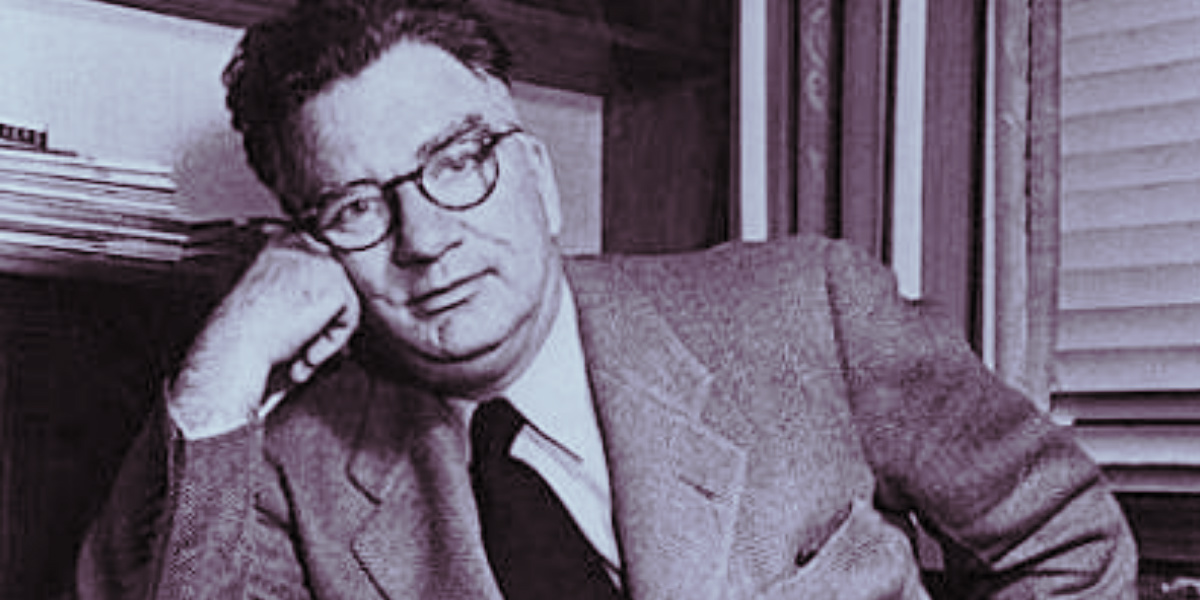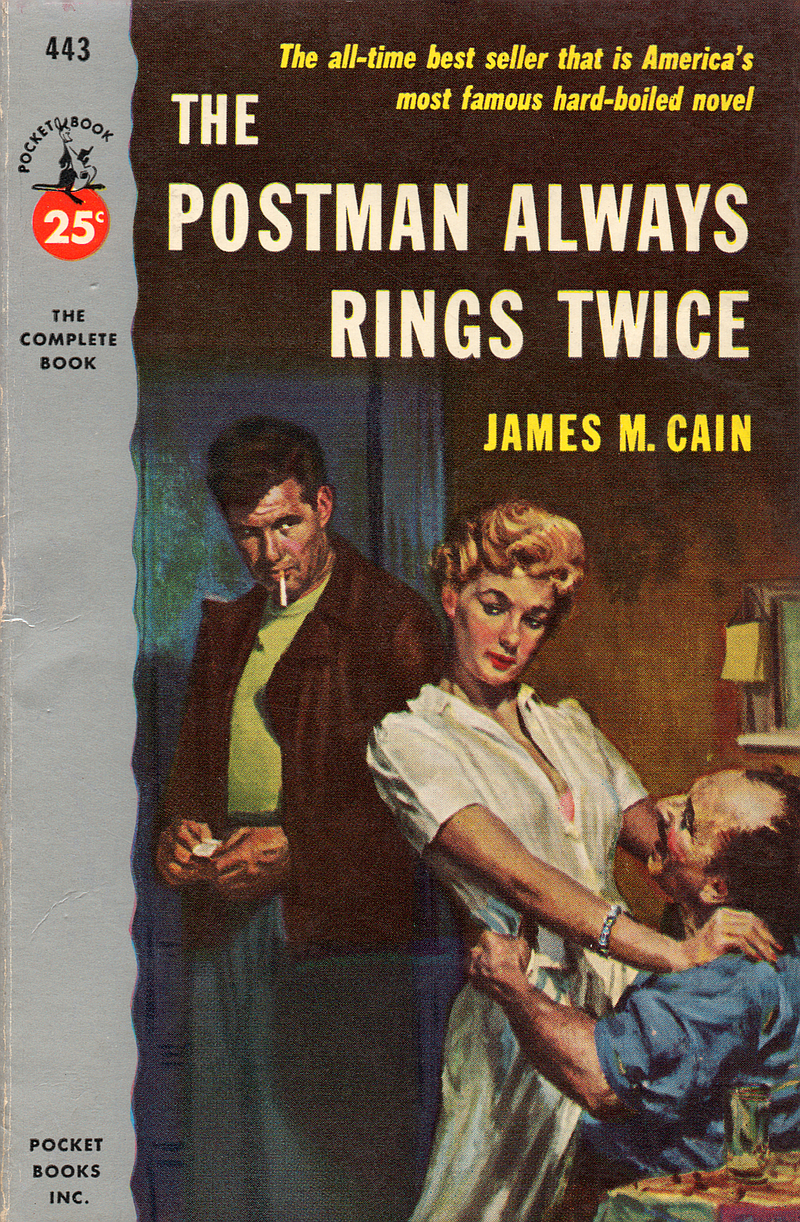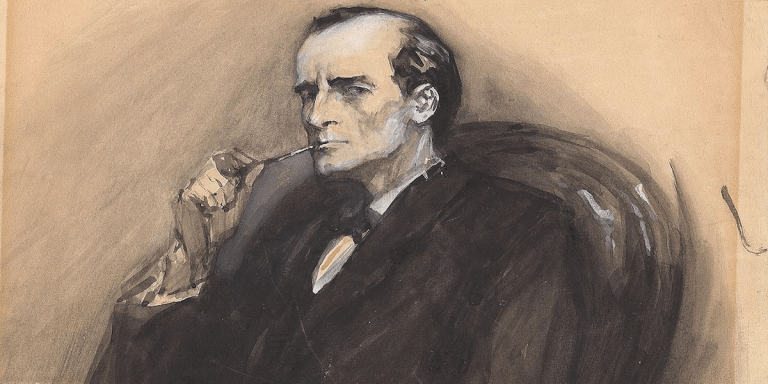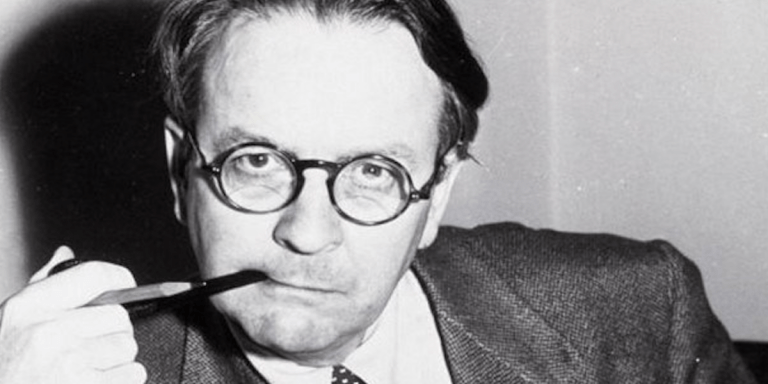How James M. Cain Epitomized Hard-Boiled Crime Fiction
 Like mysteries themselves, the mystery and crime genres have so many variations—one of which is hard-boiled crime. Hard-boiled crime evokes a very particular feeling in many readers—usually that of black-and-white photos or movies, the loner P.I., and a dark crime investigation that brings the hero (or sometimes anti-hero) up against forces of organized crime and corruption. But the hard-boiled crime genre has a much more interesting, and nuanced, history to be explored, and even though the work of James M. Cain defies many of the sub-genres accepted conventions, his work has gone on to epitomize the genre.
Like mysteries themselves, the mystery and crime genres have so many variations—one of which is hard-boiled crime. Hard-boiled crime evokes a very particular feeling in many readers—usually that of black-and-white photos or movies, the loner P.I., and a dark crime investigation that brings the hero (or sometimes anti-hero) up against forces of organized crime and corruption. But the hard-boiled crime genre has a much more interesting, and nuanced, history to be explored, and even though the work of James M. Cain defies many of the sub-genres accepted conventions, his work has gone on to epitomize the genre.
Hard-boiled crime fiction first appeared in the 1920s and grew in popularity through the 1940s. It was pioneered by Carroll John Daly, whose serialized tales were quite popular until Dashiell Hammett took up his pen and began writing better-crafted fiction that soon surpassed Daly. Largely seen as a reaction to the popularity of British mystery authors such as Agatha Christie and Dorothy L. Sayers, whose mysteries were sophisticated but tended to be bloodless and restrained, the hard-boiled mystery genre was dark, realistic, and concerned with confronting evil. At first, these stories were fostered in serial magazines and labeled “pulp”—and therefore weren’t taken very seriously—but as hard-boiled crime fiction built-in popularity and has endured throughout the years, renewed interest in its early works and pioneers have resulted in new film adaptations and modern writers emulating this distinct style.
Dashiell Hammett, Raymond Chandler, Mickey Spillane, and Erle Stanley Gardner are considered among the great founding writers of hard-boiled crime. Their books introduced readers to their iconic detectives that have gone on to embody what hard-boiled crime fiction is generally considered to be: A crime story that usually stars a private investigator who is dogged, smart, and faces betrayal at some point in the story.
 He investigates dark crimes and violence, usually in Los Angeles or the American west, and is often considered a loner, much like the American cowboy. He usually solves the crime, ensures that justice is served, and comes out a bit more jaded than before. If we consider these tenets of the sub-genre, then James M. Cain is a fascinating departure…and yet his work is no less hard-boiled crime.
He investigates dark crimes and violence, usually in Los Angeles or the American west, and is often considered a loner, much like the American cowboy. He usually solves the crime, ensures that justice is served, and comes out a bit more jaded than before. If we consider these tenets of the sub-genre, then James M. Cain is a fascinating departure…and yet his work is no less hard-boiled crime.
James M. Cain got his start in writing as a journalist for The Baltimore Sun before being drafted into WWI. After the war, he worked for numerous publications before spending time in Hollywood, writing scripts before finally turning to fiction. His first novel was The Postman Always Rings Twice, and although the protagonist is far from the noble and dogged private eye of convention, the book was dark and violent, exploring desire, murder, and underhanded schemes that abound in hard-boiled crime. It’s not a whodunit, but it’s deeply focused on the domestic and dark impulses behind the crimes. Similarly, his second novel Double Indemnity is about an insurance salesman drawn into a murderous plot by a beautiful married woman. Mildred Pierce is about a middle-class mother and divorcee who desperately wishes to make a living for her daughters. As she finds success running multiple restaurants, her eldest daughter becomes more vindictive and dismissive of her mother, and Mildred becomes more desperate to earn her daughter’s affection, to the point of turning to crime and eventually, violence.
If Hammett, Chandler, Spillane, and Garnder’s works were concerned with private eyes investigating dark crimes, then Cain’s books explored how those crimes came to be committed in the first place. Sometimes, his protagonists end up behind bars. Sometimes, they don’t. That ambiguity, and the gritty reality of his settings and plots, make him as much a part of the hard-boiled genre as any other, oftentimes offering a much more enticing and dangerous view of humanity’s darker impulses.
By clicking 'Sign Up,' I acknowledge that I have read and agree to Hachette Book Group’s Privacy Policy and Terms of Use
What to Read Next





